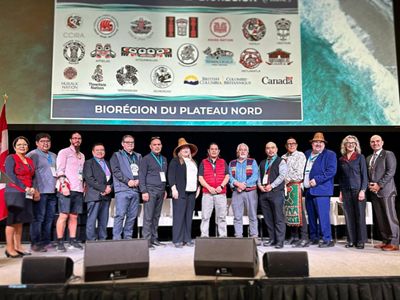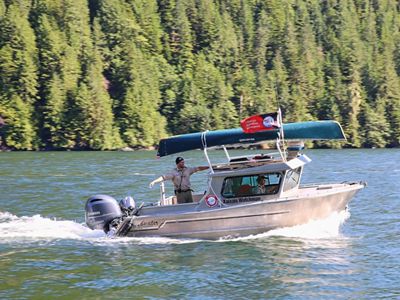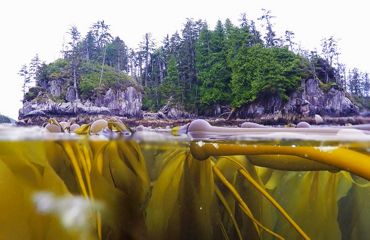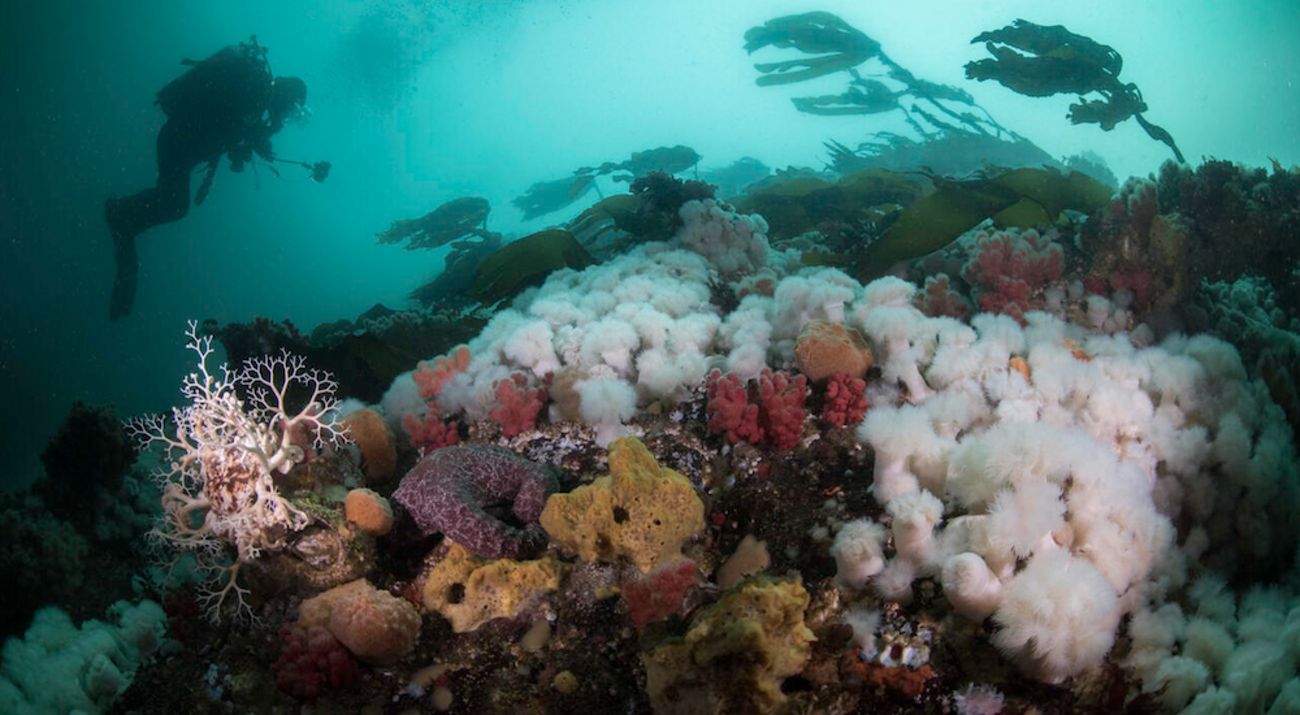Action Plan for Great Bear Sea Reflects A Collaborative Vision That Upholds Indigenous Leadership, Science and Coastal Resilience
Media Contacts
-
Jacqueline Nunes
Phone: +1 437-291-3287
Email: jacqueline.nunes@natureunited.ca
Today’s unveiling of a blueprint for a network of marine protected areas across the Great Bear Sea marks an important step towards protecting a globally rare and productive ecosystem, while supporting the strength and resilience of coastal communities and bolstering marine-based economies.
The Marine Protected Area (MPA) Network Action Plan has been endorsed by 15 First Nations, the Government of Canada, and the Government of British Columbia (B.C.). It reflects more than a decade of science and collaboration across governments, as well as engagement with industries, communities and many others. The process has been guided by Indigenous knowledge and robust science to inform the identification of more than 100 marine protected areas and their ecological and cultural conservation objectives.

“This is the first time in history—and the Great Bear Sea is the first place in the world—that multiple Indigenous and non-Indigenous governments have united together to advance a network of marine protected areas at this scale, built on a foundation of world-leading ecological standards and Indigenous cultural and scientific knowledge,” says Hadley Archer, Executive Director of Nature United. “Nature United is proud to have supported all the governance partners in achieving this milestone towards establishing the world’s largest co-governed MPA network, which will both serve as a global model of biodiversity protection and have wide-reaching benefits for coastal communities.”
“We are committed to supporting this MPA network and look forward to celebrating in 2025 when the majority of proposed sites are implemented and begin to serve as a foundation for rebuilding coastal abundance and a strong conservation-based economy.”

The Great Bear Sea is a critical natural corridor on the north and central coast of B.C. where ocean and land are inextricably connected. This announcement fortifies the ecosystem protection and sustainable economic development achieved by the Great Bear Rainforest Agreements in 2006 and 2007, across more than six million hectares of one of the world’s largest coastal temperate ecosystems. It also builds on collaborative marine planning led by First Nations and the B.C. government through the Marine Plan Partnership (MaPP).
“Moving now to implement this Action Plan will realize the vision of an ecologically comprehensive and representative network of marine protected areas for one of the richest and most productive ecosystems on Earth,” says Jenn Burt, the British Columbia Marine Program Lead at Nature United. “Within this Northern Shelf Bioregion, the network is designed to ensure 195 ecological features and multiple cultural conservation priorities are represented within protected areas—from species-rich kelp forests, to marine bird breeding grounds, to rare sponges and corals, and also Indigenous harvesting and ceremonial sites.”
Today’s announcement also reflects a commitment across government partners to work together to advance the establishment of a sustainable conservation finance arrangement, using the Project Finance for Permanence (PFP) model to ensure long-term funding for ongoing network implementation, management and stewardship, and support investment in building a conservation-based economy.
Quote: Jennifer Morris

This vast marine protected area network exemplifies the power of Indigenous leadership and partnership across all sectors.
The Great Bear Rainforest Agreements gave the world its first working model of PFP, which recently reported its 15-year results including the creation of 1,253 new, permanent jobs (with $63.5 million in local salaries); 389 research and habitat restoration projects, benefitting 75 different species; and 18 regional monitoring and Guardian Watchmen programs, which operate across more than 7 million hectares of land and marine territory. This finance tool that accompanies regional commitments to protecting land and water has since been adopted worldwide as a powerful lever for large-scale conservation investment.
“Canada is demonstrating global leadership with ambitious commitments to ocean protection. This vast marine protected area network exemplifies the power of Indigenous leadership and partnership across all sectors,” says Jennifer Morris, CEO of Nature United’s global affiliate, The Nature Conservancy. “We are at a turning point where national commitments are becoming the catalyst to the change we need. As we witness Canada's investment in nature and its people, we see global agreements strengthen—and hope this example paves the way for swift action from all governments.”
Nature United was founded as a Canadian charity in 2014, building on decades of conservation in Canada. Headquartered in Toronto, our organization has field staff located across the country. Nature United supports Indigenous leadership, sustainable economic development and science and large-scale conservation, primarily in British Columbia, the Northwest Territories and Manitoba. Our organization is also working to accelerate Natural Climate Solutions at national and regional scales. To learn more, visit natureunited.ca or follow us on Linkedin, Instagram and Facebook.
We are the Canadian affiliate of The Nature Conservancy, a global conservation organization with more than a million members and a diverse team that includes more than 400 scientists. Our global organization works in more than 80 countries and territories — either directly or through partnerships — to conserve the lands and waters on which all life depends. To learn more, visit www.nature.org or follow @nature_press.
